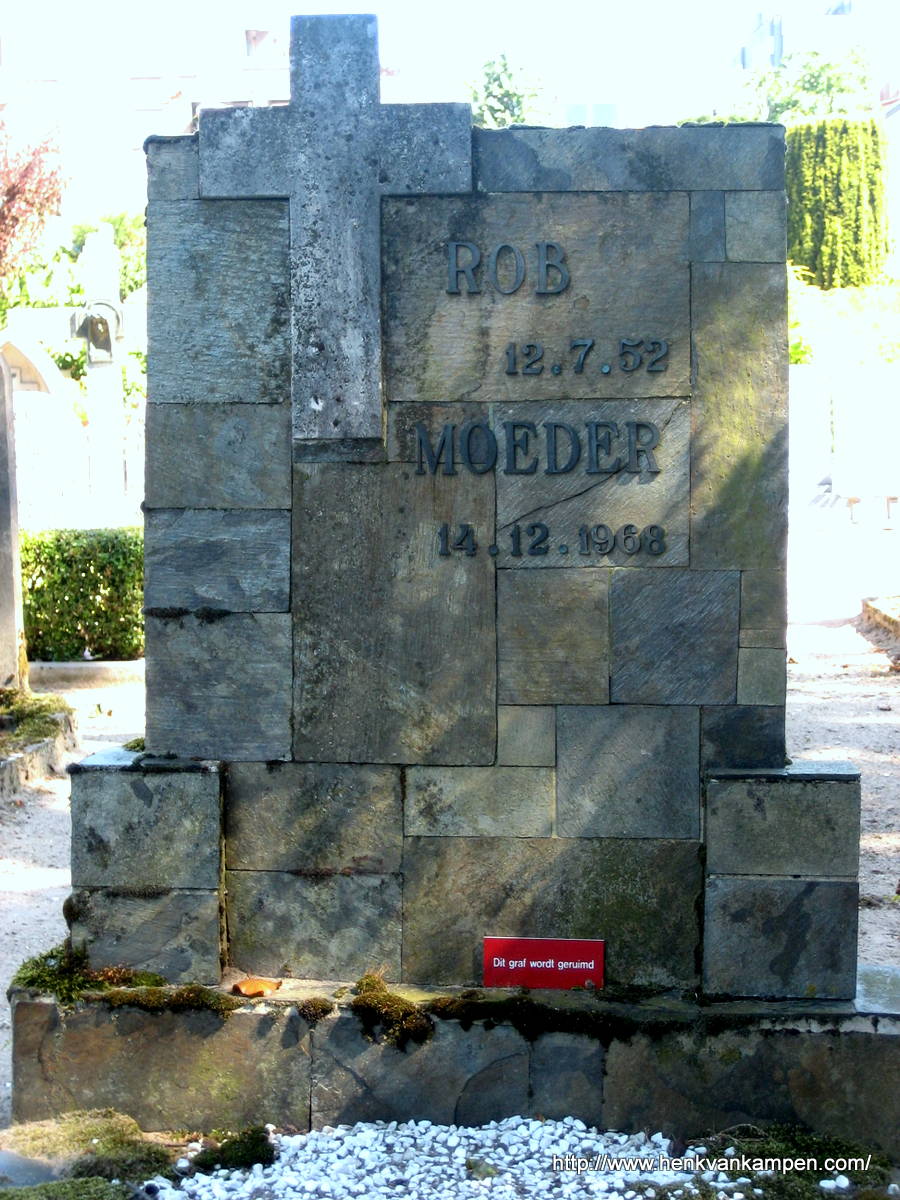In The Netherlands (and many other places in Europe) graves are leased, and old graves can be removed after the lease has expired to make room for new ones (you can read more about this practice in the latest edition of the Trace your Dutch roots newsletter). When the cemetery plans to remove a grave they will contact the family to invite them to extend the lease on the grave. If they can’t reach the family’s contact person, they will put up a notice at the notice board at the entrance, and place a sign at the grave, stating the grave is about to be removed.
This is the grave of Johannes du Saar and Elisabeth du Saar-Pasveer, at the Tolsteeg cemetery in Utrecht. In front of the grave there is a little sign asking the family’s contact person to contact the cemetery administration. This grave will probably be removed soon.
Patricia’s grave is at the Noorderveld cemetery in Nieuwegein. The green sign states that the grave is on the list of graves to be removed in early 2009 (the photo is from November 2008). Interested parties should call the phone number provided to extend the lease.
I did not check if the grave is indeed removed.
The grave of Rob and Moeder (Mother) is at the Onze Lieve Vrouwe cemetery in Amersfoort. The red sign reads Dit graf wordt geruimd, this grave will be removed.






I never knew such practices exsisted. What do they do with the headstones. This practice saddens me. There is no place for those removed to be remembers since future family members can not locate them.
Perhaps this is an example of the phrase “use it or loose it!”. If people visited the grave and saw the notice they could pay and keep the grave. Alternatively, we could see this as a green alternative to the problem of burial space and a good recycling of grave space?
Space is scarce here, and thus costs money. We can’t forever expand our cemeteries, certainly not in the urbanized, densely populated, western part of the country.
It is not a new practice, btw. It has happened since there are cemeteries. And before that most people were buried anonymously anyway (except for the elite).
Hello.. I came across your website. I have a family buried in de hoge boght, veldhoven. As i’m not living in the Netherlands, i would like to know how to extend the cemetary lease and where should i contact? Because the website is all in dutch language. And may i also know how much will i have to pay for the extension? It frustrates me because i have no information about this. I’m so glad i found your website. Looking forward for your reply! Good day!
An extension of the lease will cost you € 707,82 for ten years (source: https://www.veldhoven.nl/begraafplaats-de-hoge-boght). This cemetery belongs to the municipality of Veldhoven. Contact the town hall for more information, contact details are here: https://www.veldhoven.nl/contact-en-openingstijden